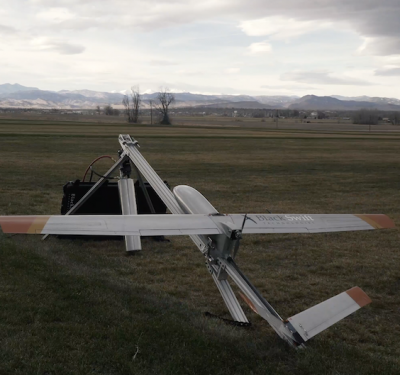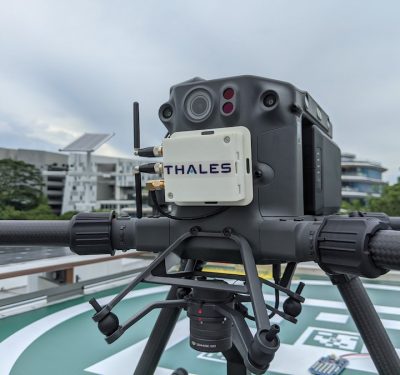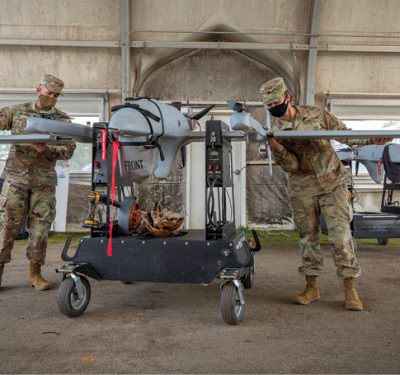
Photos courtesy of The Ohio/Indiana UAS Test Center & Complex.
Today, if a farmer wants to know what’s happening in his field, he has to walk the land.
Someday soon, farmers will be able to learn everything they need to know about their crops and how to increase crop yields from the comfort of their own homes—all thanks to the UASs providing the data.
The Ohio/Indiana UAS Test Center & Complex and Ohio State University are doing their part to make this a reality. The FAA recently granted two Certificates of Operation to the center, enabling them to conduct flight operations in support of precision agriculture research at Ohio State’s Molly Caren Agriculture Center in London, Ohio. This center maintains 1,400 acres of corn, soybeans and wheat production agriculture, and also offers a safe location for flying a small UAS.
“Ohio State is leading a series of activities around precision agriculture,” said Richard Honneywell, Executive Director of the Ohio/Indiana UAS Center & Test Complex. “They have an instrumented farm that is ideal for developing precision ag activities.”
During this project, OSU and the OH/IN UAS Center will use a 1.5 pound UAS to assess crop health. The data will be analyzed, and the results used to support research on cropping systems and assessing environmental factors that affect crop growth.
Honneywell and his team flew manned flights over the farm during this year’s growing season, but these flights didn’t offer them the opportunity to collect the data they needed. Thanks to the COAs, they’ll begin flying small unmanned aircrafts during next year’s growing season. They’re looking to answer a variety of questions, including the nutrient situation of the crops, whether they’re under or over watered, the status of the crop from a growth standpoint, as well as questions around infestation and weed growth.
“There are several different advantages to having COAs in place to research the objectives OSU is pursing,” he said. “With a UAS we’re able to take data at will, any time we need it. It gives us the opportunity to look much more frequently and to look more specifically. The quality of sensor data will be better because we’ll be closer to the crops.”
Agriculture is the No. 1 industry in Ohio, and the type of information precision agriculture can provide could help increase crop yields by as much as 10 to 20 percent, Honneywell said. While that productivity boast would be huge for Ohio farmers, it’s also huge for the industry as a whole. The goal is to eventually make this a commercially viable option on a national level.
Schools like Ohio State are working on ways to easily take the data the sensors collect and translate it directly to the farmer, Honneywell said. Ohio State is driving that research, and he expects the capabilities to continue to evolve and improve.
Farmers are thrilled about what UASs can do for their bottom line, the environment, their productivity and their overall efficiencies, said David Gallagher, the center’s Chief of Staff. He had the opportunity to talk with farmers at a recent precision ag conference, and they’re ready to embrace UASs and what they’ll mean for the agriculture industry.
“Farmers are excited about it,” he said. “They walk gigantic acreage and it takes a long time. With UASs, they can review the data they need at home, while having a cup of coffee and watching TV.”






